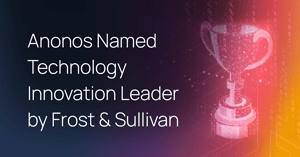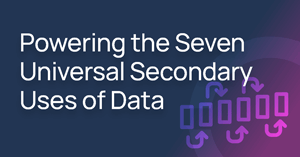Last week, AI, data analytics, and data governance experts convened for CDAO 2023 conference in Munich. This annual gathering is a melting pot of ideas, innovations, and debates on data strategies that are shaping the future of European businesses.
This year, a distinct thread weaved its way through the conference: AI is more than just model building. Many discussions and presentations centered around this idea were marking a shift in the discourse surrounding AI and its role in business. The conversation had pivoted towards ensuring AI developments make sense not only from a technical standpoint but also from the perspective of customers, organizational processes, and realistically available resources.
In this blog post, we delve into the key takeaways that emerged during the conference and how they reflect this overarching sentiment. From the revenue-driving value of AI as exhibited by giants like Vodafone, to the lessons on timing and market expectations from the Adidas story, these insights promise to offer a fresh perspective on the application and integration of AI in a business context.
This year, a distinct thread weaved its way through the conference: AI is more than just model building. Many discussions and presentations centered around this idea were marking a shift in the discourse surrounding AI and its role in business. The conversation had pivoted towards ensuring AI developments make sense not only from a technical standpoint but also from the perspective of customers, organizational processes, and realistically available resources.
In this blog post, we delve into the key takeaways that emerged during the conference and how they reflect this overarching sentiment. From the revenue-driving value of AI as exhibited by giants like Vodafone, to the lessons on timing and market expectations from the Adidas story, these insights promise to offer a fresh perspective on the application and integration of AI in a business context.
1. Mastering AI Implementation is about balancing technical excellence with customer expectations.
The refrain, "keep the business in mind", echoed throughout the CDAO sessions, underscoring the importance of crafting AI solutions that not only are efficient from a technical standpoint, but also make business sense. This includes supporting revenue streams and providing value to customers in a way that fits into their lives and aligns with their expectations.
A pertinent example of this emerged from the story of 4square, shared by Pilar Moguel, Product Analyst at Runtastic. At one point, 4square introduced recommendation features that were so personalized, they could have been described as 'creepy'. The AI model behind these recommendations was undoubtedly advanced, able to predict users' preferences with uncanny accuracy. However, it lacked the business and customer context. Today, with the growing acceptance of personalized suggestions, such a feature might be applauded, but at the time, it was just too ahead of its curve.
This case serves as a vital lesson for AI practitioners. It's a reminder that technical prowess alone doesn't guarantee successful AI integration. Understanding the business environment, staying attuned to the customer’s context, and aligning AI developments with organizational processes and available resources are equally important.
A pertinent example of this emerged from the story of 4square, shared by Pilar Moguel, Product Analyst at Runtastic. At one point, 4square introduced recommendation features that were so personalized, they could have been described as 'creepy'. The AI model behind these recommendations was undoubtedly advanced, able to predict users' preferences with uncanny accuracy. However, it lacked the business and customer context. Today, with the growing acceptance of personalized suggestions, such a feature might be applauded, but at the time, it was just too ahead of its curve.
This case serves as a vital lesson for AI practitioners. It's a reminder that technical prowess alone doesn't guarantee successful AI integration. Understanding the business environment, staying attuned to the customer’s context, and aligning AI developments with organizational processes and available resources are equally important.
2. Achieving AI maturity is a journey, one that requires patience, commitment, and a vision.
Developing AI capabilities within an organization is a journey that requires planning, strategic investment, and gradual evolution. Sebastian Kaus, Data Governance Lead at Vattenfall, set the scene beautifully for the panel he moderated, briefly describing an AI Maturity Model for the participants of the panel to use as a basis for further discussions:
Sebastian's model outlined five key stages that an organization typically traverses on its path to achieving full AI maturity.
Sebastian's model outlined five key stages that an organization typically traverses on its path to achieving full AI maturity.
- Ad hoc: At this stage, AI initiatives are largely exploratory, isolated, and spontaneous. While there is enthusiasm for AI, there is a lack of structured processes.
- Some shared processes & reusable elements: Organizations at this stage start to establish common processes or reusable components across different AI initiatives.
- Inter-departmental collaboration: At this stage, departments within the organization start to collaborate on AI initiatives. The focus is on synergy, sharing knowledge, and resources, leading to a more integrated AI approach.
- Central Infrastructure for AI: Here, organizations establish a centralized infrastructure for AI, providing a platform for idea development, experimentation, and scaling of successful AI initiatives. It streamlines the AI processes and fosters consistency in AI execution.
- In the DNA of the company: At this final stage, AI becomes a core part of the organization's fabric, impacting every function, decision, and strategy. AI is no longer a separate initiative but is ingrained into the everyday operations and culture of the organization.
3. Creating an effective model is just the start. The true test lies in successfully scaling the model development process across different use cases and business units.
This theme was thoroughly explored during the CDAO conference, with discussions around use case portfolio management and scalability taking center stage.
To truly reap the benefits of AI, businesses must carefully manage their use case portfolio and strategically scale their AI initiatives. This involves asking three key questions:
According to Cornelia Schaurecker, Global Group Director AI & Big Data at Vodafone, the secret lays in automation, making Machine Learning Operations (MLOps) core to the AI use case development, and eliminating personal bottlenecks as much as possible. In Cornelia's words, "A happy data scientist is a good data scientist". By providing data scientists with the tools, support, and environment they need, Vodafone was able to increase efficiency, streamline operations, and scale AI use cases successfully.
To truly reap the benefits of AI, businesses must carefully manage their use case portfolio and strategically scale their AI initiatives. This involves asking three key questions:
- Why?: If the use case doesn't support larger business goals or drive value at scale, then the rationale for scaling it might need to be revisited.
- What?: Not all use cases will deliver equal benefits at scale, so it's crucial to identify those that have the potential to drive the most impact.
- How?: This revolves around the practical aspects of scaling – ensuring regulatory compliance, maintaining quality, securing necessary resources, and so on, as teams scale use cases to new territories and data sources.
According to Cornelia Schaurecker, Global Group Director AI & Big Data at Vodafone, the secret lays in automation, making Machine Learning Operations (MLOps) core to the AI use case development, and eliminating personal bottlenecks as much as possible. In Cornelia's words, "A happy data scientist is a good data scientist". By providing data scientists with the tools, support, and environment they need, Vodafone was able to increase efficiency, streamline operations, and scale AI use cases successfully.
4. AI opens avenues for significant business value, but the road to success is lined with complex data challenges.
As companies continue to embrace the transformational power of AI, they are also unlocking new ways to drive significant business value from their AI initiatives.
A prime example of AI's potential to drive business value came from telecom titan, Vodafone. It's no small feat to consider that out of Vodafone’s impressive €26 billion revenue, a staggering 95% is now supported by AI. This serves as a testament to the immense potential of AI in driving revenue and efficiency, particularly when implemented and scaled across various business units.
However, driving value from AI is not without its challenges, especially when it involves sharing data across different units within a business. A case in point is Adidas Runtastic. The fitness app generates a trove of user data that could be invaluable for Adidas in predicting consumer needs and personalizing product recommendations. For instance, analyzing workout data could help Adidas predict when users might need new running shoes, even suggesting specific models based on their running habits.
However, leveraging this data isn't as straightforward as it seems. Obstacles such as legal restrictions and user consent often hamper the free flow of data between different entities within an organization. Questions like "Can we recommend a shoe?", "Can we recommend a shoe at the right time?", and "Can we recommend a specific shoe?" become multifaceted challenges to navigate.
The Adidas Runtastic scenario illuminates the complexities of data sharing in the modern business landscape. It emphasizes the need for robust data governance models and cross-functional collaboration to fully tap into the power of AI.
A prime example of AI's potential to drive business value came from telecom titan, Vodafone. It's no small feat to consider that out of Vodafone’s impressive €26 billion revenue, a staggering 95% is now supported by AI. This serves as a testament to the immense potential of AI in driving revenue and efficiency, particularly when implemented and scaled across various business units.
However, driving value from AI is not without its challenges, especially when it involves sharing data across different units within a business. A case in point is Adidas Runtastic. The fitness app generates a trove of user data that could be invaluable for Adidas in predicting consumer needs and personalizing product recommendations. For instance, analyzing workout data could help Adidas predict when users might need new running shoes, even suggesting specific models based on their running habits.
However, leveraging this data isn't as straightforward as it seems. Obstacles such as legal restrictions and user consent often hamper the free flow of data between different entities within an organization. Questions like "Can we recommend a shoe?", "Can we recommend a shoe at the right time?", and "Can we recommend a specific shoe?" become multifaceted challenges to navigate.
The Adidas Runtastic scenario illuminates the complexities of data sharing in the modern business landscape. It emphasizes the need for robust data governance models and cross-functional collaboration to fully tap into the power of AI.
5. Embarking on an AI journey necessitates the use of the right privacy-enhancing tools.
As organizations navigate their way through the complexities of AI and the data challenges along the way, having the right partner to guide them can make all the difference.
Anonos’ Data Embassy software was designed to help companies address their data challenges at any stage of their AI journey - whether you need to use data for testing and development, share data internally, or extend into model building and deployment.
The Data Embassy toolbox enables the creation of Variant Twins, which are fit-for-purpose, protected transformations of sensitive data. Each Variant Twin utilizes the most suitable PET (privacy-enhancing technology) for each secondary data use. Data Embassy's privacy transformers then deploy these tools successfully, ensuring seamless integration with your on-premise systems and cloud infrastructure. This integration guarantees the secure use of data anytime and anywhere.
By embracing Data Embassy's Variant Twins, organizations can redefine their data governance and privacy policy enforcement strategies. Transforming a 'No' into a 'Yes' enables superior business outcomes. The accelerated approvals for AI, ML, analytics, and data-sharing initiatives result in an improved ROI.
Anonos’ Data Embassy software was designed to help companies address their data challenges at any stage of their AI journey - whether you need to use data for testing and development, share data internally, or extend into model building and deployment.
The Data Embassy toolbox enables the creation of Variant Twins, which are fit-for-purpose, protected transformations of sensitive data. Each Variant Twin utilizes the most suitable PET (privacy-enhancing technology) for each secondary data use. Data Embassy's privacy transformers then deploy these tools successfully, ensuring seamless integration with your on-premise systems and cloud infrastructure. This integration guarantees the secure use of data anytime and anywhere.
By embracing Data Embassy's Variant Twins, organizations can redefine their data governance and privacy policy enforcement strategies. Transforming a 'No' into a 'Yes' enables superior business outcomes. The accelerated approvals for AI, ML, analytics, and data-sharing initiatives result in an improved ROI.
Conclusion
Reflecting on the CDAO conference, it's clear that the world of AI is maturing. The focus is shifting from merely building models to harnessing AI's power to drive real business value. Key takeaways from the conference point towards a future where AI is not just a technical endeavor but a business-wide initiative that drives revenue, enhances customer experience, and propels innovation.
However, realizing this vision requires organizations to navigate numerous data challenges. They must enhance their data maturity, scale AI use cases effectively, align AI initiatives with market expectations, and bolster their data governance practices. The road ahead is complex but promising, filled with opportunities for those willing to embrace the journey.
However, realizing this vision requires organizations to navigate numerous data challenges. They must enhance their data maturity, scale AI use cases effectively, align AI initiatives with market expectations, and bolster their data governance practices. The road ahead is complex but promising, filled with opportunities for those willing to embrace the journey.



